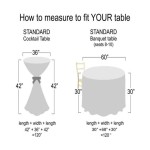Mastering the 4 Times Tables Up to 100
The 4 times tables, also known as the multiplication table for the number four, play a fundamental role in mathematical understanding and underpin various arithmetic operations. Learning this table effectively is crucial for developing a strong foundation in mathematics and for tackling more complex calculations. Understanding the patterns and relationships within the 4 times tables can make memorization easier and facilitate a deeper understanding of multiplication itself.
Understanding the Basics of Multiplication
Multiplication is a mathematical operation that involves combining equal groups. In simpler terms, it is a shorthand way of adding the same number repeatedly. For instance, 4 x 3 can be understood as adding four groups of three, or 3 + 3 + 3 + 3. This concept is essential for grasping the 4 times tables, as each multiplication fact represents the sum of four equal groups.
Exploring the 4 Times Tables
The 4 times tables involve multiplying the number four by consecutive whole numbers from 1 to 10. Each multiplication fact in this table represents the product of four and another whole number. The first few multiplication facts in the 4 times tables are:
4 x 1 = 4
4 x 2 = 8
4 x 3 = 12
4 x 4 = 16
As you progress through the table, each product increases by four. This pattern is a result of the multiplication process and can be helpful for memorizing the table.
Strategies for Memorizing the 4 Times Tables
Memorizing the 4 times tables is crucial for fluency in multiplication. Here are several effective strategies:
1. Repeated Practice
Consistent practice is key to memorization. Regularly reciting the 4 times tables aloud, writing them down, or using flashcards can help reinforce the multiplication facts in your memory.
2. Identifying Patterns
Recognizing patterns within the 4 times tables can significantly aid in memorization. Notice that the ones digit alternates between 4 and 8, and the tens digit increases progressively. This pattern can simplify the memorization process.
3. Using Visual Aids
Visual aids, such as charts, diagrams, or even manipulatives like blocks or counters, can be helpful for understanding and remembering multiplication facts. Visual association can make the learning process more engaging and effective.
4. Skip Counting
Skip counting by fours is a simple but effective way to practice the 4 times tables. Starting from four, repeatedly add four to find the subsequent multiplication facts. This method can help you visualize the pattern and reinforce the multiplication facts in your mind.
Real-World Applications of the 4 Times Tables
The 4 times tables have numerous practical applications in everyday life and various fields. Some examples include:
1.
Calculating Costs:
When purchasing four of the same item, the 4 times tables can quickly calculate the total cost.2.
Measuring and Dividing:
When measuring distances or dividing objects into equal groups, the 4 times tables are essential for accurate calculations.3.
Timekeeping:
There are four quarters in an hour, and the 4 times tables can be used to calculate time intervals.4.
Geometry:
The 4 times tables are used in calculating the perimeter and area of squares and rectangles.Mastering the 4 times tables lays the foundation for understanding more complex mathematical concepts and facilitates everyday calculations. By practicing and employing effective strategies, you can confidently navigate the world of multiplication.

Why And How You Should Use A Times Table Grid Free Printables

Sample Of A Wide Range 4 Times Table And Activities Teaching Resources Multiplication Questions 100

Multiplication Tables Revisited Mental Calculation Mathematics And Puzzles Art Of Memory Forum

Pin By Lorraine Falqueza On Quick Saves Times Table Chart Math Printables Charts

Learning The 4 Times Table Street

Multiplication Table Simple English Wikipedia The Free Encyclopedia

Table Of 4 Learn Multiplication

Multiplication Table 3 From 1 To 100

Learn Multiplication Tables 1 To 100 Geeksforgeeks

Multiplication Charts Free Printable Times Table S 1 12 15 20 And More








